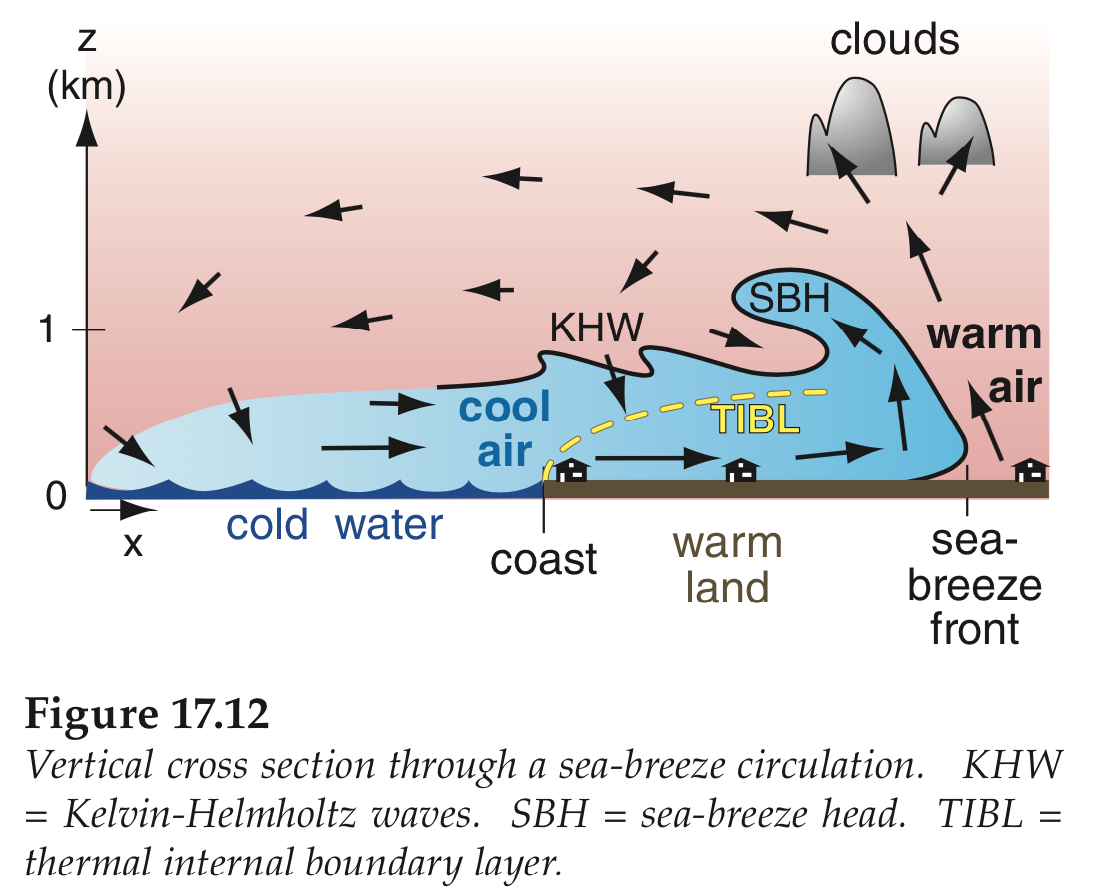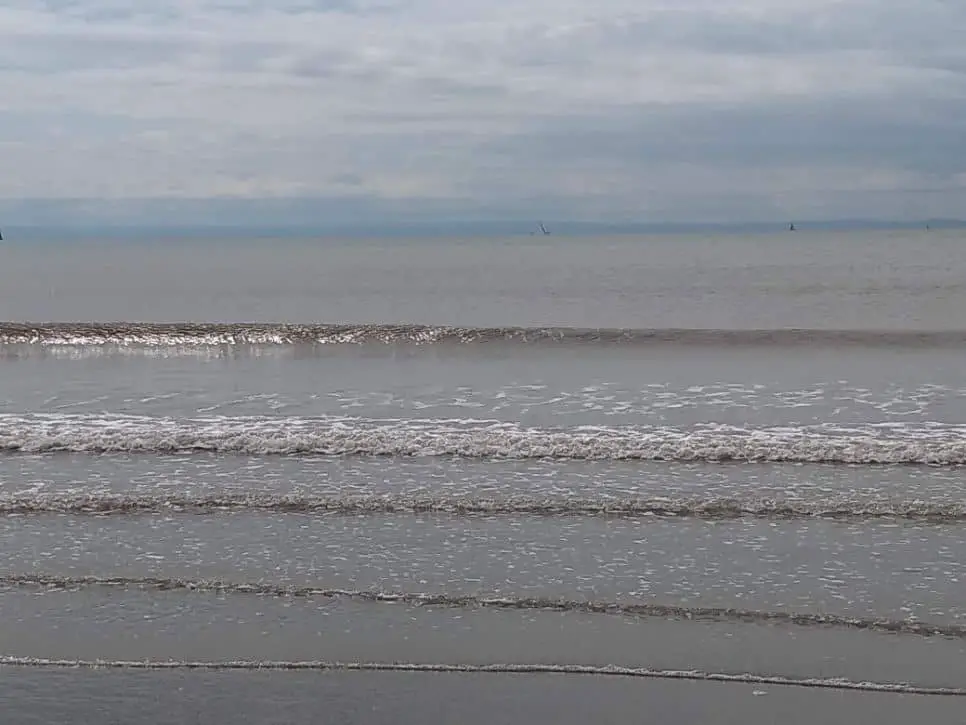Near the Shore Winds Tend to Blow
Start studying the GEOG EXAM 3. Near the shore winds tend to blow out toward the water at night.
The conduction of thermal energy from the land to the water.

. At night the land cools quickly cool air sinks and air pressure rises. Warm air above the land rises and is replaced by cooler air from the water. For the same pressure gradient ie the same gradient wind strength winds will be stronger and more gusty in a NW wind than in a SW one.
Therefore cool air on the land close to the coast this air leads heat to the hot air which. So an off-shore breeze will blow from land to sea to equalise the pressure differences. Occur when the temperature at the seashore is higher than that inland.
This wind happens to be the sea breeze. Cool air above the water conducts heat to the warmer air above the land. It is caused by the difference in the rates of heating between the land and the ocean.
The major finding is that hills and buildings on the river shores tend to redirect winds to blow along the rivers either directly upstream or downstream. The wind tries to leave the shore at right angles. RYA Manual of Race Training.
Wind Maps Click the images to expand These images show the winds of Typhoon Dolphin. What drives this process. This is the kind of information GOES-16 collects about wind showing the direction and speed of wind vectors.
Require a surface region of high pressure inland. It is called a sea breezeor on-shore breee. Near the shore winds tend to blow toward the land during the day what drives this process.
Electromagnetic waves O C. Near the shore winds tend to blow out toward the water at night. Convection currents O B.
These wind maps were created when the typhoon was a Category 4 with winds of 131-155 mph. Cool air above the land rises and is replaced by warmer air from the water. They usually occur during the day as tbe land is warmer than the sea.
This problem has been solved. The bigger the difference in temperature the stronger the wind. Just as the name goes wind energy is energy that results from the transformation of air currents into electricity.
The sea breeze is a thermally produced wind blowing during the day from the cool ocean onto the adjoining warm land. Result from the fact that water both warms and cools more slowly than. Memorize flashcards and build a practice test to quiz yourself before your exam.
Convection currents in the air b. CHAPTER 8 flashcards containing study terms like Sea breezes. Convection currents in the air D.
Show transcribed image text. Near the shore winds tend to blow out toward the water at night. Convection currents in the water o c.
Warm air above the land rises and is replaced by cooler air from the water causing a convection current. What drives this process. What drives this process.
Hot air rises causing low pressure. See the answer See the answer See the answer done loading. Hence they are often reported in that way in the table.
Direct contact of particles O D. Near the east coast of England the wind. The conduction of thermal energy through the air C.
Near the shore winds tend to blow toward the land during the day. To utilize the wind that blows over the land we must build wind farms that can extract optimum power from the wind. The conduction of thermal energy from the land to the water.
Wind farms found on the land are what we refer to as onshore wind farms. How Onshore Wind Energy Works. Radiation 3 Near the shore winds tend to blow out toward the water at night.
That is if the wind is coming off the shore at other than 90 degrees to the shoreline then as it crosses the shore the breeze will tend to. Winds will blow more nearly along the isobars than those in the warm sector. Convection currents in the water B.
The conduction of thermal energy through the air o d.

Understanding Wind Directions For Kiteboarding Thekitespot Com

How To Use Our Wind Forecast We Give Two Wind Speeds The First Is The Steady Speed And The Second The Gust Speed Our Experience In The Water Tells Us That This Gust Speed Is Really The One To Pay Most Attention To The Arrow Shows The Direction The Wind Is

No comments for "Near the Shore Winds Tend to Blow"
Post a Comment